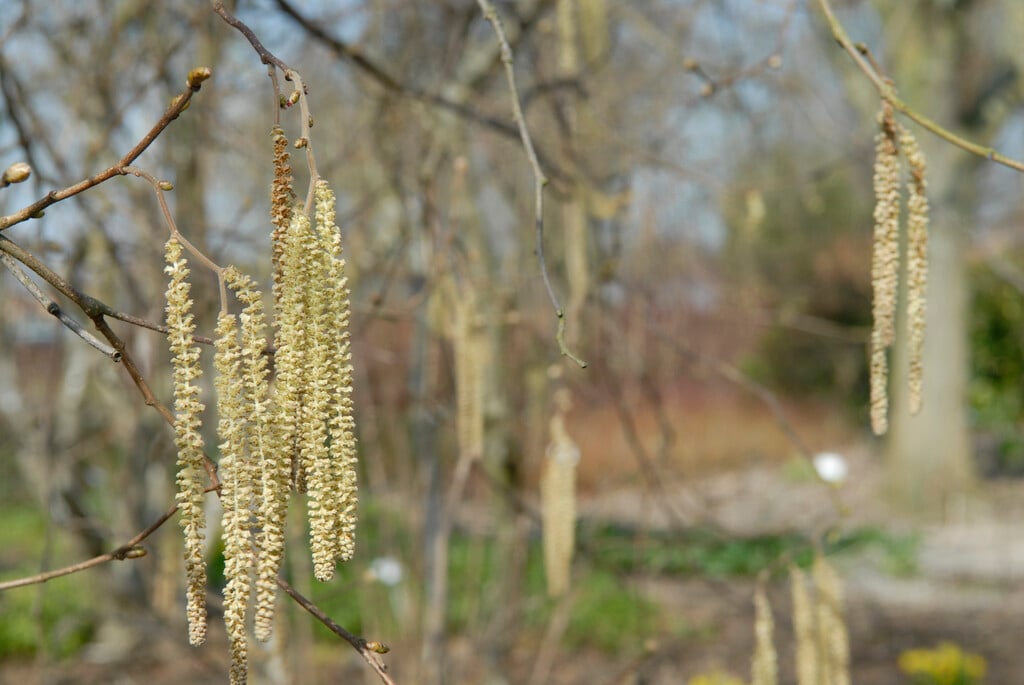Corylus avellana 'Aurea'
hazel 'Aurea'
Slow-growing, deciduous shrub to about 6m tall, with yellow leaves in spring fading to yellow-green during summer, and turning pale yellow in autumn before falling. Yellow catkins form in spring, and develop into edible nuts loved by squirrels
Size
Ultimate height
4–8 metresTime to ultimate height
5–10 yearsUltimate spread
2.5–4 metresGrowing conditions
Moisture
Moist but well–drained, Well–drainedpH
Acid, Alkaline, NeutralColour & scent
| Stem | Flower | Foliage | Fruit | |
| Spring | Yellow | Yellow Green | ||
|---|---|---|---|---|
| Summer | Yellow Green | |||
| Autumn | Yellow | Green | ||
| Winter |
Position
- Full sun
- Partial shade
Aspect
East–facing or South–facing or West–facing
Exposure
Sheltered Hardiness
H6Botanical details
- Family
- Betulaceae
- Native to GB / Ireland
- No
- Foliage
- Deciduous
- Habit
- Spreading branched
- Genus
Corylus are deciduous trees and large shrubs with broad leaves, and showy male catkins in early spring, followed by edible nuts
- Name status
Accepted
How to grow
Cultivation
Grow in any moist but well-drained soil in sun or partial shade, ideal for chalky soils and best leaf colour in full sun. For more information see cobnuts and filberts
Propagation
Propagate by seed, layering or stooling or removing rooted suckers
Suggested planting locations and garden types
- City and courtyard gardens
- Cottage and informal garden
- Wildlife gardens
- Edible fruit
Pruning
Pruning group 1 or Pruning group 7. Suitable for coppicing alternate years to keep height restricted
Pests
May be susceptible to caterpillars, gall mites, aphids and sawflies. Squirrels like to feed on the nuts
Diseases
May be susceptible to honey fungus, silver leaf and powdery mildews
Get involved
The Royal Horticultural Society is the UK’s leading gardening charity. We aim to enrich everyone’s life through plants, and make the UK a greener and more beautiful place.
